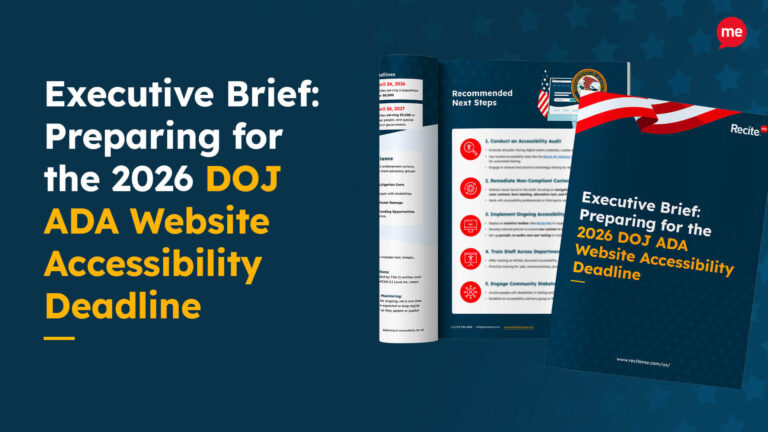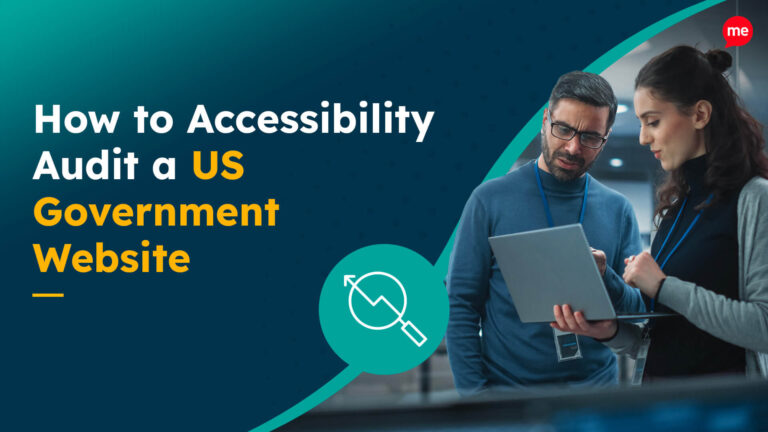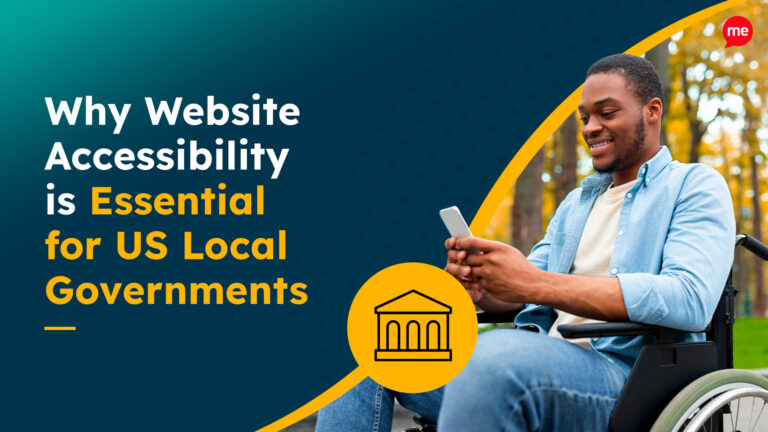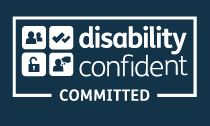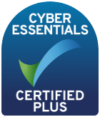Get Your Free Accessibility & Inclusion Toolkit
Download NowSection 508 accessibility requirements ensure that federal agencies keep their online content accessible for disabled people. In terms of web accessibility best practices, this is an essential piece of legislation for federal agencies and their vendors to stay aware of.
Not only does this clause have legal implications for US organizations, but it also provides an opportunity to reach out to consumers and clients with disabilities. According to the CDC, there are 70+ million disabled adults living in the US, which is over 25% of all adults. So, it’s clear that businesses can’t afford to ignore this important clause.
Read on to learn more about how to meet Section 508 standards.
What is Section 508?
Section 508 refers to a clause within the Rehabilitation Act of 1973. It was amended into the act in 1998. The clause establishes that federal agencies must make their electronic and information technology (EIT) accessible to disabled people.
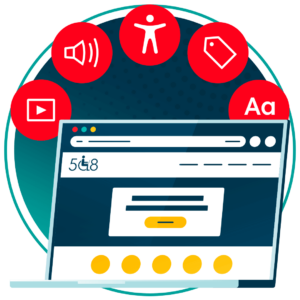
Section 508 requirements apply in a variety of circumstances, including where EIT is:
- Developed
- Procured
- Maintained
- Used
In essence, Section 508 standards aim to prevent public sector agencies from discriminating against people with disabilities through EIT. It means that federal agencies are required to provide a level of access to digital information that is comparable to what the able-bodied US population receives.
Section 508 requirements were updated in 2017. For example, this included updates relating to the accessibility of telecommunications equipment, governed by Section 255 of the Communications Act.
Who needs to comply with Section 508 of the Rehabilitation Act?
Section 508 standards apply to all federal agencies. That includes public service agencies that operate within the US, but also those that serve the American public whilst operating outside of the States.
Furthermore, businesses that work or provide services to federal agencies also need to ensure they are compliant. That includes third-party contractors, partners, and vendors. Third-party services commonly provided to federal agencies include:
- Social media platforms
- Online communications platforms
- Data analytics tools
- Payment gateway providers
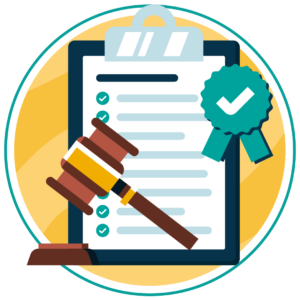
However, all businesses should strive to improve their digital accessibility standards, for legal, ethical, and financial reasons.
Get a free automated accessibility check of your websites homepage. This will identify and highlight any compliance issues on your website. Followed by recommendations on how to implement the necessary changes to make your website more accessible.
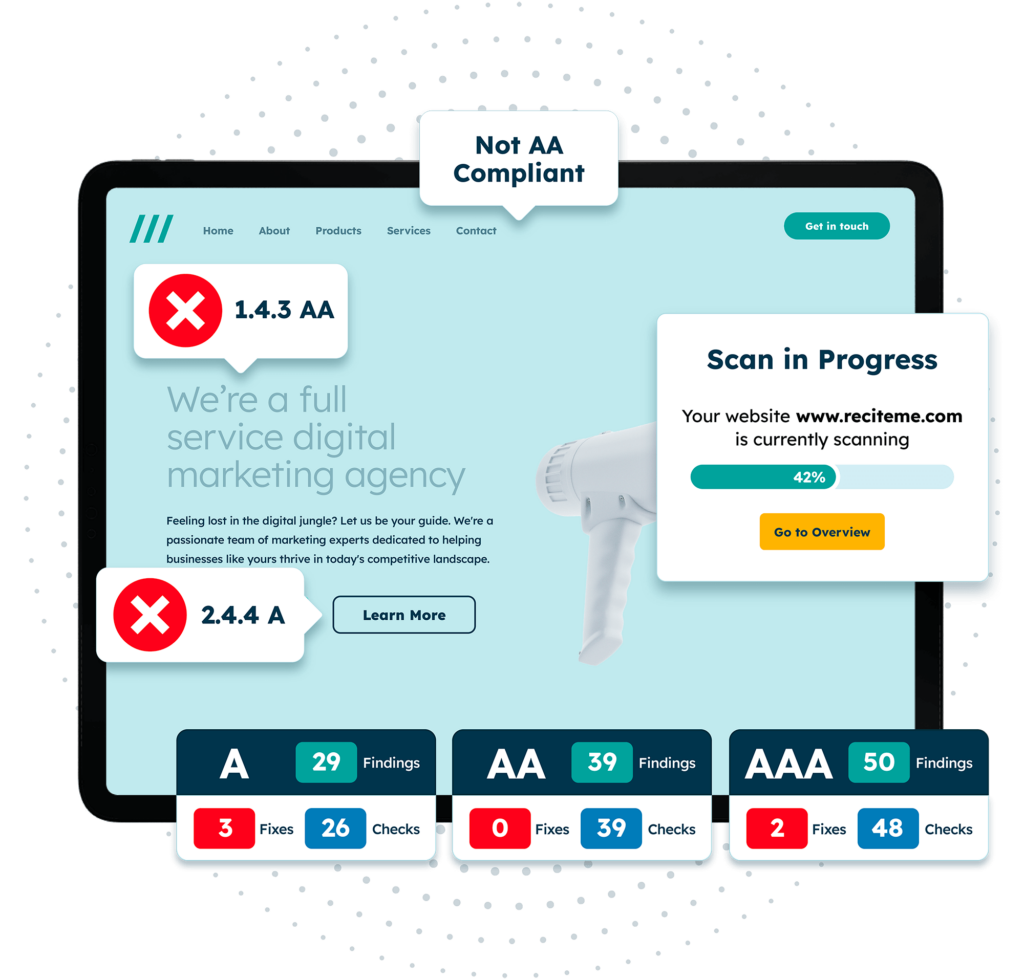
What are the technical standards for meeting Section 508 requirements
Since 2018, the Section 508 technical requirements have been based on WCAG 2.0 Level AA success criteria. So, what does this mean exactly?
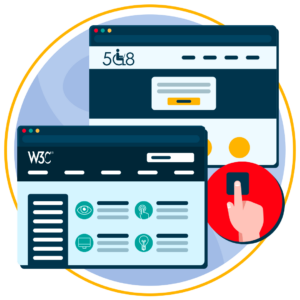
The Web Content Accessibility Guidelines (WCAG) is a consensus standard developed by the World Wide Web Consortium (W3C), as part of their Web Accessibility Initiative (WAI). It provides guidelines for making digital content accessible to disabled audiences, including websites and applications. WCAG is recognised worldwide as the gold standard for online accessibility.
WCAG rates web content accessibility by three levels of compliance: Levels A, AA, and AAA. To comply with Section 508 requirements, you’ll need to comply with Level AA.
Examples of specific Section 508 compliance requirements for your website
It’s natural to feel daunted by Section 508, but putting these changes in place ensures your business is compliant – and helpful for disabled audiences. To make it simpler, we’ve highlighted some examples of Section 508 requirements, and how you can implement them into your website.
1. Clear colour contrast
Individuals with visual impairments or dyslexia may struggle to read text if the color contrast is too high or low.
What do Section 508 guidelines say:
To meet the Section 508 requirements, you’ll need to have a color contrast ratio of at least 4.5:1 for text and images of text. There are a few exceptions to keep in mind. Large-scale text (and images of large-scale text) instead need to have a minimum color contrast of 3:1.
Meanwhile, if the text (or image of text) is purely incidental (e.g. for decorative purposes only) or is part of a logo or brand name, there are no minimum requirements for color contrast.

How to fix:
To resolve this issue, you’ll need to adjust the text or background color to improve the contrast. Aim to reach 4.5:1 for average-sized text and 3:1 for large-sized text. Website and digital document tools usually include accessibility features to make this easy. Alternatively, you could use an online contrast checker to review your text.
2. Descriptive image alt text
Image content is typically not accessible to people with visual impairments or those who use assistive technology, such as screen readers. Alternative text provides a description of image content to help these groups to engage with the content. In order to be accessible, it needs to be sufficiently descriptive.
What do Section 508 guidelines say:
Section 508 requires federal agencies to provide text alternatives for non-text content. This also includes details like controls and user exercises. There are some exceptions, such as for content that is only for visual formatting.
However, as a rule, if an image contributes to the audience’s understanding and accessibility of the website, it will need descriptive alt-text.
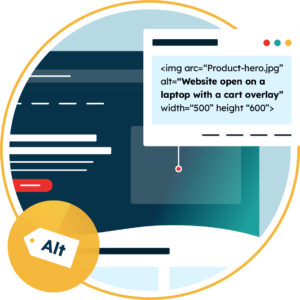
How to fix:
To resolve this issue, you’ll usually need to adjust the image properties on the website platform or software. The alt-text should convey the exact same information as the image, including only the most relevant details.
3. Captions and written transcripts for video content
Video content can be inaccessible for individuals with hearing impairments or audio processing difficulties. Captions and transcripts can provide an accessible alternative.
What do Section 508 guidelines say:
To comply with Section 508 and WCAG 2.0 Level AA standards, the following requirements apply:
- Captions must be provided for all prerecorded video content that contains audio.
- Live captions are also required for live multimedia content when such content is part of the public-facing or official communication of a federal agency.
- Transcripts must be made available for all prerecorded multimedia content.

How to fix:
Using video editing software, add captions to make your video content accessible before you upload. You could also host any videos on external platforms like YouTube, where captions can easily be added. Add a transcript directly beneath any video or audio content to provide another textual alternative.
4. Keyboard navigation
Keyboard navigation can be made difficult or even impossible when some interactive elements, such as pop-ups, are added to a website. This makes it inaccessible for people who can’t use a mouse or trackpad.
What do Section 508 guidelines say:
Section 508 requires that all functionality of a website must be operable through a keyboard interface without requiring specific timing for individual keystrokes. This aligns with WCAG 2.0 Success Criterion 2.1.1 (Keyboard) and 2.4.7 (Focus Visible), which are both required at Level AA.

How to fix:
Keep custom or third-party add-ons to a minimum, and regularly test your site using the Tab and Enter keys to check functionality is accessible via keyboard.
5. Accessible forms
Some website form elements are not accessible for assistive technology, making it inaccessible for some disabled people.
What do Section 508 guidelines say:
Section 508 incorporates the POUR principles of WCAG 2.0 into the guideline requirements for accessible website forms. Here’s how it breaks down:
- Perceivable (form fields must be clearly labeled)
- Operable (users must be able to navigate and interact with forms using a keyboard)
- Understandable (instructions and error handling must be clear)
- Robust (forms must work with current and future assistive technologies)

How to fix:
To ensure your forms are accessible, use standard HTML controls like <input>, <select>, and <label>, which are typically compliant by default. Each form field should have a clearly associated label, and instructions or error messages should be placed near the relevant fields and made detectable by screen readers.
Also, ensure the form is fully navigable by keyboard in a logical order. If you’re using custom components or third-party form builders, test them carefully to ensure they support accessibility. Sticking with semantic HTML and minimizing custom elements helps maintain compliance and improves usability for all users.
6. Avoid the use of flashing content
Flashing content can cause seizures, as well as migraines and nausea. This can make it dangerous and inaccessible for people with photosensitive epilepsy.
What do Section 508 guidelines say:
To meet Section 508 requirements, guidelines state that pages should not feature any content that flashes more than three times within any one-second period. There is an exception when the flash is below the thresholds for a general flash or red flash.

How to fix:
Wherever possible, you should aim to avoid the use of flashing content. If you’re unsure, there is software available to analyse your website for flashing content, such as the Trace Center’s Photosensitive Epilepsy Analysis Tool.
7. Proper use of headings
Headings can be particularly helpful for making websites accessible for screen readers, as they provide clear guidance through the page. However, they need to be formatted properly, rather than simply stylised to look like a heading.
What do Section 508 guidelines say:
Guidelines specify that web content should be easy for all users to navigate. This includes ensuring that headings are clearly labelled in terms of their purpose or topic, and that, wherever possible, they organize the structure of the content.

How to fix:
Make sure you format your headings using H1s, H2s, etc. Don’t just style them manually with bold or italics. Follow a clear heading hierarchy. Stick to one H1 for your page title, then split down to H2s and H3s for sections and subsections respectively.
Our 40-page Digital Accessibility & Inclusion Toolkit helps businesses break down online barriers and make a real impact. It offers practical advice on all aspects of digital accessibility, from writing an accessibility statement to accessible website tips and inclusive hiring.
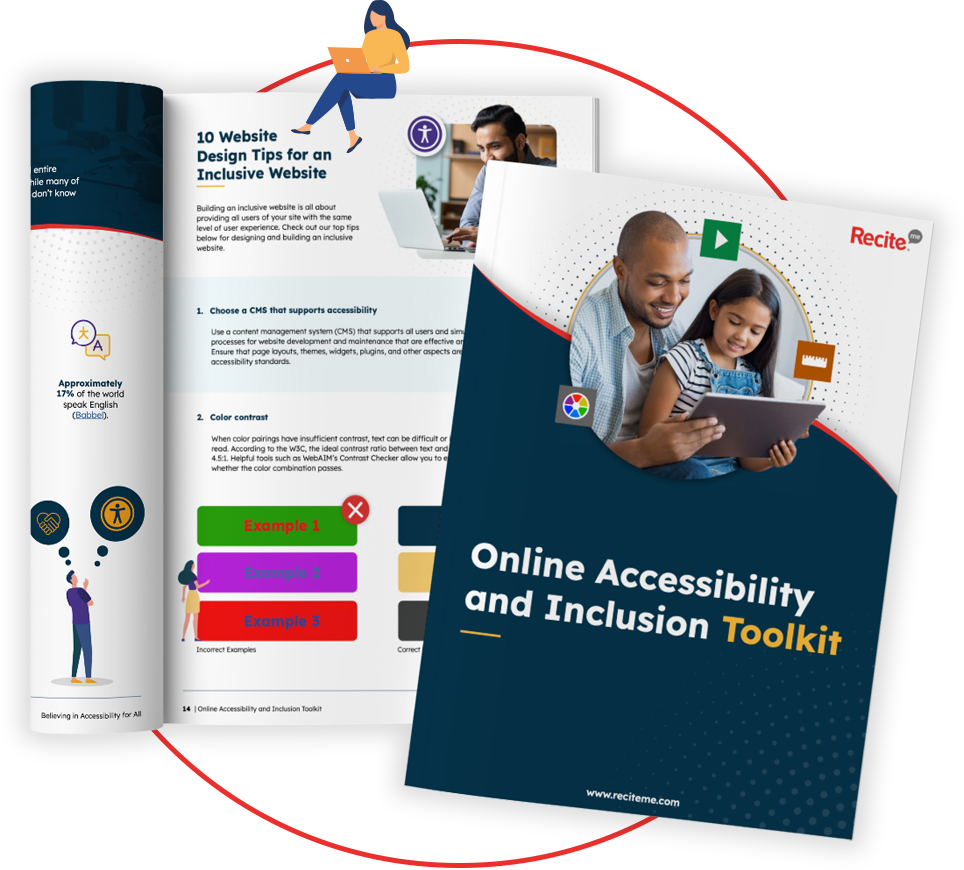
What are the risks of ignoring Section 508 accessibility standards?
It can be tempting to ignore Section 508 requirements and hope for the best. However, there are severe consequences to consider.
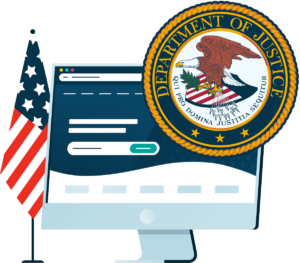
Legal consequences
Failure to comply with the requirements can open up your business to countless potential Section 508 lawsuits. If disabled individuals are unable to access your web content, they may bring a lawsuit against your organization in civil court. This could lead to costly legal battles, financial penalties, remediation costs, and more.
Loss of federal contracts
Aside from legal consequences, failure to meet Section 508 accessibility standards as a contractor or partner can naturally result in a loss of federal contracts. Section 508 was put in place to ensure that government agencies provide accessible digital content for all. If your company cannot meet those standards, you could potentially lose the opportunity – and its revenue.
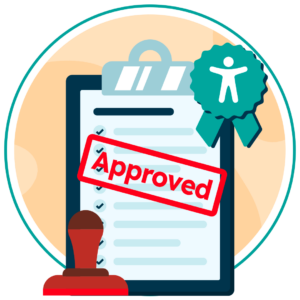

Reputation and trust issues
Organizational reputation and loyalty is also on the line with Section 508 compliance. With over 1 in 4 US adults recorded as having a disability, accessible web content is an absolute must. Without providing vital accommodations, organizations face public backlash and damaged reputations.
Actionable steps to meet Section 508 requirements
If you want to ensure your web content meets Section 508 standards, it can be difficult to know where to start. How can you be sure that your company is fully compliant?
Fortunately, there are some key steps you can take to meet the guidelines.
1. Conduct an accessibility audit of your website
Accessibility audits give you a clear picture of how your web content stands up against Section 508. For example, an Accessibility Checker makes it quick and easy to scan your web pages, images, PDFs and more for violations. It also provides AI-driven fixes, including for compliance issues such as alt-text and color contrast.
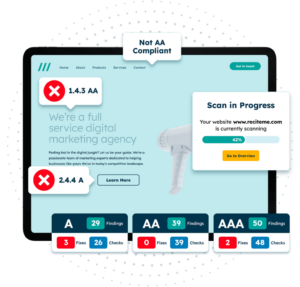

2. Run manual tests on your website
Automated auditing tools provide an essential first step for Section 508 compliance. However, you should also aim to conduct manual tests as a follow-up. This ensures no accessibility issues have been missed. Planning to get stuck into manual testing? Keep a website accessibility checklist to hand, so you can ensure your website is inclusive for all disabilities.
3. Create a VPAT for your website
A Voluntary Product Accessibility Template (VPAT) outlines your product’s accessibility compliance, in line with Section 508 requirements. Products that can be evaluated with a VPAT include software and hardware. Your team can make a start by downloading our free VPAT template.
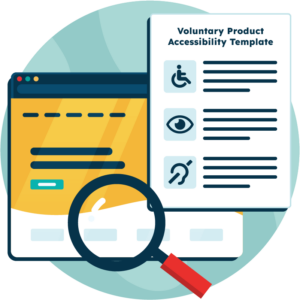

4. Train staff and key contributors on digital accessibility
Training your staff and contributors on digital accessibility makes it easier to keep future content compliant. For example, our free website accessibility training provides a clear understanding of disability-friendly digital content, including legal compliance and awareness of assistive technologies, like text-to-speech.
The importance of maintaining accessibility standards for long-term compliance
The digital world is constantly evolving. Your accessibility practices must too. Section 508 requirements provide clear guidelines for accessible websites and other digital content, but for successful compliance, you need a long-term strategy.
Your organization should aim to schedule accessibility audits on a regular basis. Any compliance issues can then quickly be identified and resolved. If you plan to overhaul your website or other digital content, or if accessibility standards are updated, you’ll need to arrange an audit as a priority.
Stay ahead of US digital accessibility laws with a clear overview of federal and state regulations. See real lawsuit examples in different states and a 7-step website accessibility action plan.
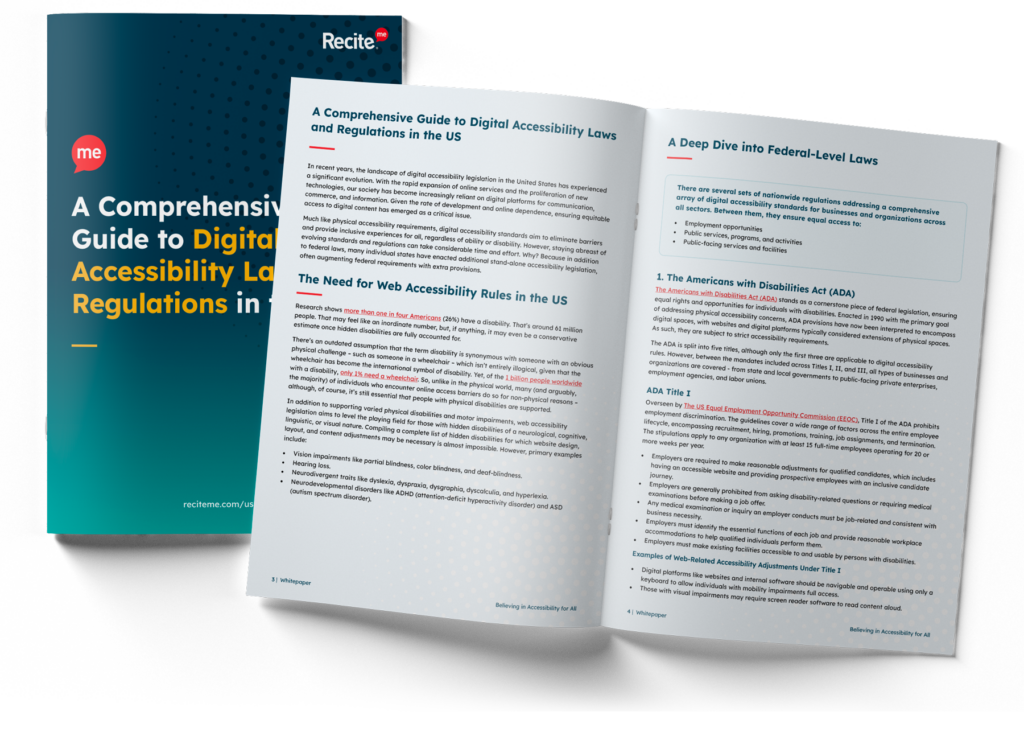
Conclusion: Get ahead of the game with Section 508 compliance
Compliance with Section 508 accessibility requirements is non-negotiable for federal agencies and their contractors. That’s down to the serious legal, financial, and reputational consequences.
Want to make a start? Don’t wait for problems to arise. It’s always best to adopt a proactive, preventative approach. Start off with a free accessibility checker to audit your website for Section 508 compliance. Or book an appointment with Recite Me’s experienced web accessibility consultants for tailored support.
Section 508 requirements FAQs
Looking for a recap or quick summary? Here are a few of our most frequently asked questions to help you get to grips with the essentials:
What is required for 508 compliance?
Section 508 standards require federal agencies and related organizations (such as contractors) to make their digital content accessible for disabled individuals. They are based on WCAG 2.0 Level AA success criteria, such as a color contrast ratio of 4.5:1 for text elements.
How do you know if something is 508 compliant?
To be compliant with Section 508 of the Rehabilitation Act, your business or product will need to meet the WCAG 2.0 Level AA success criteria. You can evaluate compliance through accessibility audits with automated software and follow-up manual testing.
What is the testing tool for 508 compliance?
There are several different 508 compliance testing tools available, with different features. For example, the Recite Me Accessibility Checker can assess compliance of web pages, PDFs, images, and much more.

